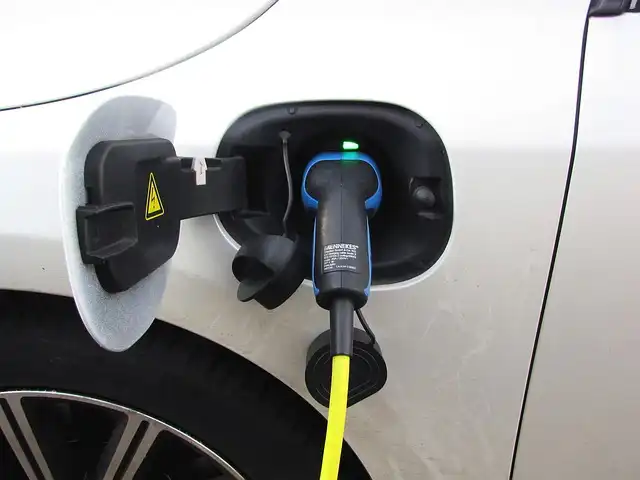PHEV Emissions: Real-World vs. Official Figures in Europe

PHEV emissions in Europe are significantly higher in real-world driving than official WLTP figures suggest. Automakers may be gaming the system, hindering the transition to EVs. Discrepancies and potential solutions are discussed.
In its present kind, a PHEV with an all-electric range of 37 miles (60 km) is expected to run in what’s understood as charge-depleting mode in 80% of the marketed EV range. From 2025-2026, the exact same PHEV will have to run in charge-depleting setting 54% of the time, and from 2027-2028, that number will go down also further to 34%, according to T&E.
PHEV Emission Discrepancies: Official vs. Reality
Comparative, PHEVs registered in 2022 had real-world discharges that were four times higher than the official figures, with 137 g CO2/km observed, while the typical WLTP emissions were rated at 33 g CO2/km. In 2021, the observed emissions were 134 g CO2/km, while the main rankings balanced 38 g CO2/km.
According to T&E, in charge-depleting (CD) mode, the car mainly operates on electrical power from the battery. The ICE may still kick in when added power is required, such as throughout rapid acceleration or uphill driving.
Charge-Depleting Mode and ICE Influence
According to the EEA report, which is based upon data transferred from over 127,000 on-board gas consumption meters fitted to PHEVs signed up in 2023, the real-world exhausts of the observed fleet were 139 grams of CO2/kilometer, while the main WLTP-rated exhausts should have been 28 g CO2/km.
That claimed, these newest numbers suggest that European car manufacturers are video gaming the system to prevent paying fines if their average co2 discharges exceed the maximum degree imposed for the fleet. As flawed as they could be, PHEVs have an area in the transition toward an all-electric future, but auto companies need to tip up and do what’s right. By the looks of it, that’s not what’s happening today.
Gaming the System: Automaker Strategies
Plug-in hybrid electrical lorries, or PHEVs, are a hotly discussed topic in Europe now. And some new discharges information published by the European Setting Agency (EEA), quoted by the NGO Transportation & Setting (T&E), is readied to put even more gas onto a fire that has already been burning for some time in the bloc.
Lots of proprietors like PHEVs due to the fact that they supply the ease of usage of a gas engine with better fuel economic situation and, in theory, much fewer emissions than a simply fuel-powered automobile. And automakers claim PHEVs can be a remarkably useful tool in lowering emissions when the button to EVs is showing more challenging than expected. Authorities fuel intake numbers have actually rarely been on the same level with the real-world results, and it’s no different when it comes to PHEVs. From 2025-2026, the same PHEV will certainly have to run in charge-depleting setting 54% of the time, and from 2027-2028, that number will drop even further to 34%, according to T&E. That claimed, these most current numbers recommend that European automakers are gaming the system to stay clear of paying fines if their typical carbon dioxide discharges go beyond the optimum degree imposed for the fleet.
On a current road trip, I started with a full container of gas and a complete battery. At the end of the day, with an empty battery and an almost vacant tank, I had actually averaged 58.8 miles per gallon (4 liters/100 km). That’s very remarkable for a 4,000-pound (2,000-kilogram) wagon with 455 horsepower– but it’s nowhere near the 213 mpg (1.1 l/100 kilometres) estimated by Volvo.
The Utility Factor Debate: ACEA’s Concerns
Here’s the issue, however. The European Vehicle Manufacturers’ Organization (ACEA), which represents several European car manufacturers, lately gotten in touch with the EU to drop the forthcoming modifications to the Utility Factor. Ola Kallenius, that is the head of state of the ACEA and the Chief Executive Officer of Mercedes-Benz, co-signed a letter with Schaeffler’s Powertrain and Chassis Chief Executive Officer, Matthias Zink, claiming that the bloc must go down the guideline altogether since that’s the only method to stop Chinese rivals from obtaining an advantage over local producers.
Things are plainly relocating the wrong instructions, and all of it come down to just how these discharges numbers are determined. Official fuel consumption numbers have seldom been on par with the real-world outcomes, and it’s no different when it comes to PHEVs. That’s because they’re created in a research laboratory, to make points easier for homologation, yet likewise to keep things fair for everyone.
Lots of proprietors enjoy PHEVs since they provide the ease of use of a gas engine with higher gas economic situation and, theoretically, much less discharges than a purely fuel-powered car. When the button to EVs is showing more difficult than expected, and car manufacturers say PHEVs can be a remarkably helpful device in decreasing exhausts. This research study shows that PHEVs emit 5 times much more carbon dioxide right into the environment compared to the main numbers published by automakers.
1 charge-depleting mode2 European automakers
3 fuel consumption
4 PHEV emissions
5 real-world emissions
6 WLTP
« Car Theft Prevention: Deterrents, Tracking & Security TipsPhysical Controls vs. Touchscreens: Knobs and Switches in Modern Cars »
